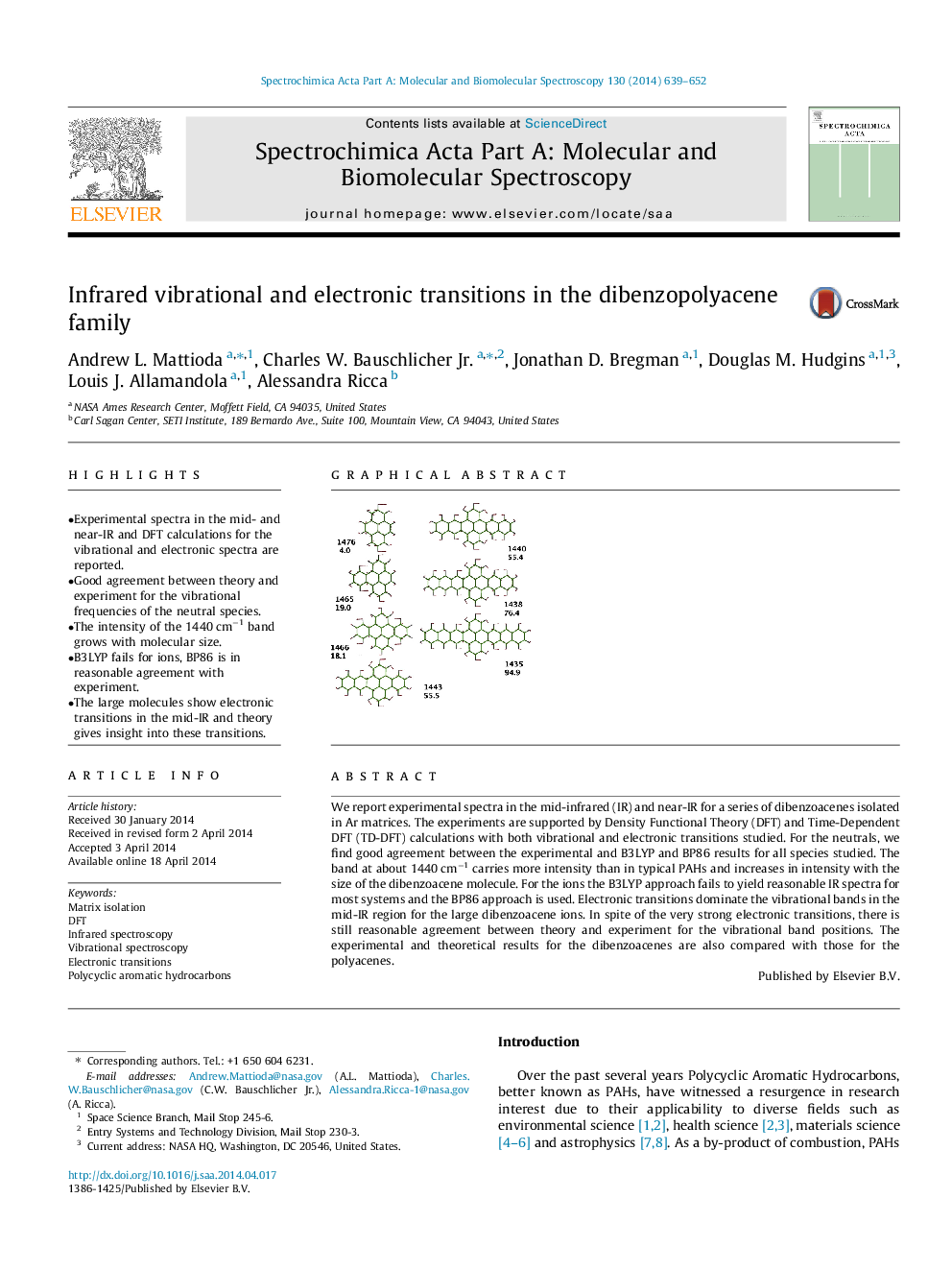| Article ID | Journal | Published Year | Pages | File Type |
|---|---|---|---|---|
| 1230396 | Spectrochimica Acta Part A: Molecular and Biomolecular Spectroscopy | 2014 | 14 Pages |
•Experimental spectra in the mid- and near-IR and DFT calculations for the vibrational and electronic spectra are reported.•Good agreement between theory and experiment for the vibrational frequencies of the neutral species.•The intensity of the 1440 cm−1 band grows with molecular size.•B3LYP fails for ions, BP86 is in reasonable agreement with experiment.•The large molecules show electronic transitions in the mid-IR and theory gives insight into these transitions.
We report experimental spectra in the mid-infrared (IR) and near-IR for a series of dibenzoacenes isolated in Ar matrices. The experiments are supported by Density Functional Theory (DFT) and Time-Dependent DFT (TD-DFT) calculations with both vibrational and electronic transitions studied. For the neutrals, we find good agreement between the experimental and B3LYP and BP86 results for all species studied. The band at about 1440 cm−1 carries more intensity than in typical PAHs and increases in intensity with the size of the dibenzoacene molecule. For the ions the B3LYP approach fails to yield reasonable IR spectra for most systems and the BP86 approach is used. Electronic transitions dominate the vibrational bands in the mid-IR region for the large dibenzoacene ions. In spite of the very strong electronic transitions, there is still reasonable agreement between theory and experiment for the vibrational band positions. The experimental and theoretical results for the dibenzoacenes are also compared with those for the polyacenes.
Graphical abstractFigure optionsDownload full-size imageDownload as PowerPoint slide
